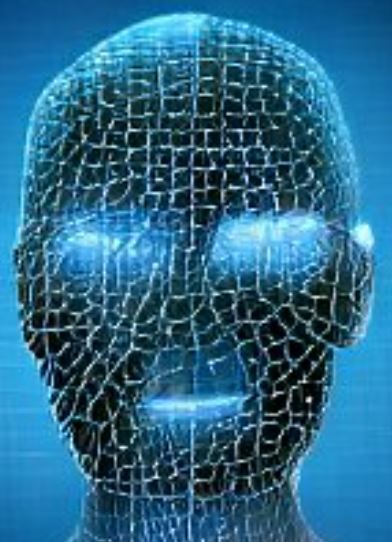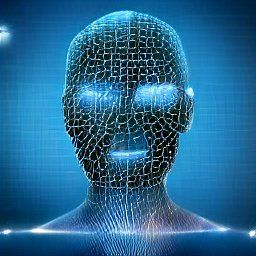Components in Artificial Intelligence for Face Recognition

We know facial recognition mainly from our phones when opening them etc. But how does it work in a way to precisely detect our faces even as we grow and change our looks slightly? Face recognition accurately recognises different identities so that no two faces can be mixed up. This is done with the help of artificial intelligence, which allows computers to ‘act more like humans’ so they’re more precise, and even faster in recognition. Here I will be talking about the steps in AI facial recognition.
Artificial intelligence (AI) is the ability of a computer to do tasks that are usually done by humans that need human intelligence [2]. Facial recognition uses a set of algorithms [4] that map an individual’s facial features and store the data as a face print to be able to identify them. Image processing and machine learning are the key factors in this [3]. Machine learning is a form of artificial intelligence that a computer uses to help find patterns and similarities in large data sets, like a large number of photos and trying to identify one person [5]. Image processing is being able to extract information from an image to, in this scenario, be able to identify someone, like extracting certain features of a person. AI improves image processing by helping computers interpret images like humans do [2], so without AI, face recognition would be much less developed.

What parts of artificial intelligence help face recognition?
Categories in AI, like machine learning and deep learning, allow the comparison of many images for facial recognition to succeed [1]. But how do they work? As mentioned earlier, machine learning is a form of AI, and a common machine learning algorithm used to help with facial recognition is neural networks (which is another name for deep learning). These simulate the way the human brain works, making it good at recognising patterns and playing an important role in image recognition. It takes a dataset as input, identifies the patterns in the data and provides the desired algorithm. Like when trying to identify a face, multiple patterns are searched for, such as the height/width of the face, and the width of features like the lips and skin tone, to compare until found [5].
What are the steps of AI facial recognition?
- Input a face picture
- A face is detected by finding common features, e.g., eyes, mouth, nose
- Information like these features is extracted from the image
- These features are compared with what they are trying to find, e.g., for face recognition on phones, they are compared with the face stored in the phone to unlock it.
- Once they are matched/found, it is alerted that the face is identified
Techniques used in facial recognition
- Removing the background. For example, if there’s a static background, then removing the background can help reveal more of the facial features.
- Skin tone can be used to identify as well.
- Using motion to find faces, if a face is moving, we calculate the moving area. But there’s a drawback of mixing objects in the back with the face.
Conclusion
With AI based face recognition having 99.5% accuracy rates, components of AI have really shaped face recognition into what it is today. The techniques of removing the background and identifying key features, textures, and colours allow facial recognition to be much more reliable and accurate.
References
1. Encyclopedia Britannica. n.d. artificial intelligence - Reasoning. [online] Available at: <https://www.britannica.com/technology/artificial-intelligence/Reasoning> [Accessed 19 July 2022].
2. GeeksforGeeks. n.d. Face recognition using Artificial Intelligence - GeeksforGeeks. [online] Available at: <https://www.geeksforgeeks.org/face-recognition-using-artificial-intelligence/> [Accessed 19 July 2022].
3. RecFaces. n.d. AI Facial Recognition Technology Overview 2021 | RecFaces. [online] Available at: <https://recfaces.com/articles/ai-facial-recognition> [Accessed 19 July 2022].
4. dzone.com. n.d. Importance of AI Applications in Facial Identification - DZone AI. [online] Available at: <https://dzone.com/articles/ai-applications-in-facial-identification#:~:text=Subsets%20of%20Artificial%20Intelligence%20such%20as%20Machine%20Learning,in%20terms%20of%20accuracy%20as%20well%20as%20speed.> [Accessed 19 July 2022].
5. Bing.com. n.d. [online] Available at: <https://www.bing.com/ck/a?!&&p=cdef4116816e43c3JmltdHM9MTY1ODM1NDgwOCZpZ3VpZD0xMTljNWMzNC02ODg4LTRhNzctYmU3Ni0yYTAyMzM4YTJkMGMmaW5zaWQ9NTQzMw&ptn=3&hsh=3&fclid=3fa18855-0878-11ed-a07e-e64e1f19975c&u=a1aHR0cHM6Ly9lbHlzaXVtcHJvLmluL2xpc3QtYXJ0aWZpY2lhbC1pbnRlbGxpZ2VuY2UtbWV0aG9kcy1pbWFnZS1wcm9jZXNzaW5nLXByb2plY3RzLw&ntb=1> [Accessed 19 July 2022].
Author Biography
Marim Sabah, born in 2005, is a student in England at Tipton School. She is a participant in the Nuffield research placement program, supervised by Professor Ugail. Her A-Level subjects are computer science, business and biology. She is interested in pursuing further studies in the field of computer science. She enjoys coding, reading, and immersing herself in research projects.

Cite this article as:
Marim Sabah, Components in Artificial Intelligence for Face Recognition, theCircle Composition, Volume 3, (2022). https://theCircleComposition.org/components-in-artificial-intelligence-for-face-recognition/
